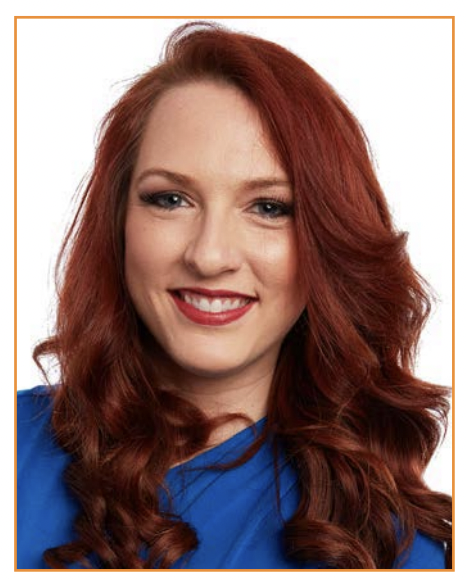Tracy Martin
Owner, Straight Consulting Plano, TX
PCSO Bulletin Contributor
I need to start by telling you something you already know. The pandemic changed everything. Decades from now, we’ll look back on 2020 and COVID the way people look back on 1346 and the Black Death, or 1918 and the Spanish flu. It was a once-in-a-generation event that created massive casualties and a catastrophic disruption to life as we knew it. In the early days, we were sent home, thinking it would be temporary. We took hard looks at our businesses and gave fresh thought to restructuring just to survive. Now, as vaccinations ramp up, cases fall, and we settle back into normal rhythms, we’ve cleaned house and reset mentally. And you probably knew that, too. But let’s talk about what you probably don’t know. Our industry is facing another disruptive force. Just below the surface of all this “new normal” upheaval, another wave of change has been rolling toward our shores. And it’s that convergence that we need to talk about. That wave is the Millennials.
Let’s Talk About Millennials
To understand Millennials, aka Generation Y, we need to go back for a second to two other group, the Baby Boomers. The Boomers—born post-WWII, between 1946 and 1964—changed everything in their path. Companies that adapted to serve their changing needs saw major success. Gerber Baby Foods thrived in their early years by giving them on-the-go choices, Ford crushed it by delivering the Mustang for all those 16-year-olds, and the Chrysler Minivan was there to shuttle their growing families to soccer practice. Every industry they touched was remade in their image. Next came the significantly smaller Gen X, born between 1965 and 1980. Then we get to Gen Y. Born between 1981 and 1996, they outnumber Gen X three to one, with about 80 million of them domestically (that’s about 25% of the US population). Not only that, but they wield $1.4 trillion (that’s trillion with a T) in spending power, only $500 billion less than the COVID Relief Bill, and they spend that annually. So, there’s a ton of them, they’re well-funded, and you ignore them at your peril. Now, I could get into a whole host of characteristics that define their priorities and buying habits. For more detail, I’d suggest Fromm and Vidler’s Marketing to Millennials or Millennials With Kids. But for the sake of time, let me give you three of their core values when it comes to interacting with brands of any kind. Millennials want personalization, casualization, and democratization. Or put more simply, they want it to be unique, informal, and fair. Let’s unpack those.
Is It Unique?
Like that box full of large T-shirts, the ones you’ve had stashed in a supply closet for 5 to 10 years, one size doesn’t fit all, let alone most! Millennials want their experiences to be unique. Just look at their names! Growing up, most of you had three Jennifers, two Katies, and about five Michaels in your classes. Now, we have patients coming in with a name pronounced “Ashtalynn,” only there’s a silent “Q” in the middle. They have more tattoos than ever, all their photos come with filters, and even their food orders are built to order. So, just offering braces or Invisalign with anything approaching a “standard plan” is a nonstarter. Millennials aren’t shopping for “off the rack.” They want to feel like it’s uniquely, specifically customized just for them! Maybe that means adding Spark Clear Aligners to your repertoire to give them the latest, greatest, and clearest aligners on the market. Perhaps it’s using LightForce brackets that are specially printed to perfectly attach to the patient’s teeth. Or how about InBrace, because they don’t want to stop smiling during treatment because of brackets or don’t want the hassle of aligners? Think of it like bespoke orthodontics. If they feel like you took the time to really understand their cases and then tailored treatments to suit their specific, individual needs, then they’re all in!
Is It Informal?
Call her Tracy. Not Mrs. Martin (that’s her mother). Not “ma’am.” And if you’re treating her kiddos, it absolutely must not be “mom.” She is an autonomous, complex, multifaceted adult with interests and occupations outside of her children or spouse. So, if you want her to drop $6,000, the least you can do is learn her first name! Millennials want to do business with their friends. They want to connect beyond the transaction. Their lines between work and home are blurring at an exponential rate. Entire swaths of the population just figured out they could work remotely. Some of us haven’t put on dress pants in more than a year . . . and may never do so again! So, from that first new patient call, take the time to intentionally build a personal, yet casual, relationship. Now, casual doesn’t mean unprofessional, but it does mean showing greater vulnerability. It means talking about your personal life and maybe even means making the friendship Facebook official. Anything you can do to make your office feel like home and create an authentic relationship with Millennials will yield big dividends. It’s as simple as asking them “When is your birthday?” on that first call, versus “What is your date of birth?” One sounds like you’re asking a friend to add it to your calendar, the other sounds like you’re doing hospital intake. Keep it casual.
Is It Fair?
Lastly, you have to play fair. This is the generation that birthed massive, global change movements like Black Lives Matter, Me Too, Time’s Up, LGBTQ, and numerous others. This is a generation that wants everyone—regardless of skin color, sexual orientation, gender, or geography—to get a fair shake. They value transparency. And while I’m sure you don’t offer different pricing for male or female patients, does your practice feel inclusive? Are you consistent across the board? Military or family courtesies are one thing, but how liberal are you with the “friends and family” courtesy? Inconsistency leads to hurt feelings . . . and hurt feelings have access to social media. If you run a contest or a promotion, is anyone knocked out of eligibility? Can clients participate even though they’re in obs or retention? Or if they’re adults instead of teens? Someone’s husband would love to win some Taylor Swift concert tickets, thank you very much! This runs true for your employees as well. Do some team members get dramatically different perks or benefits? Are they based on merit and value provided, or just because they’ve been here longer? If you play fair with everyone, they’ll love you for it.
Final Thoughts
We’ve been beating this drum for a while now. We were forced to implement numerous things due to COVID that we should have already been rolling out to serve Millennials! Virtual appointments are necessary if you’re trying to keep people socially distanced, sure. But they’re also extremely convenient for those with busy schedules, and it feels way more casual than a full-blown office visit. Same goes for texting. Yes, texting is a great way to alert a patient that you’re ready for them to come in from the parking lot. But it’s also something I do with my friends and family. So, when I send a quick text saying “Kenley had a great appt today. The Motion 3D’s REALLY doing its thing. Should be ready to move to next phase in another 6 wks! -Dr. B” the parent feels informed, and it reinforces our casual friendship. Look at everything in your practice through the lenses of unique, informal, and fair, and I promise you will win over Millennials. And I suggest you start now because this wave is upon us. Either you ride it, or you’ll be crushed by it.


